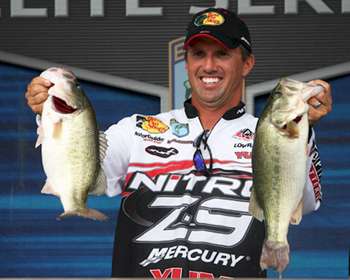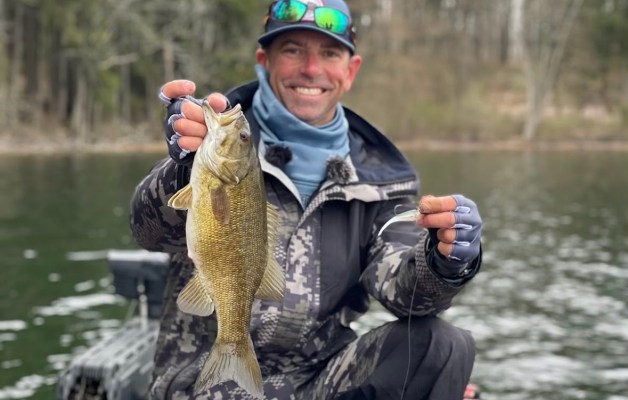
Bassmaster Elite Series pros carry hundreds of different lures each time they hit the water. While each type of lure has a time and place, fast-moving baits like crankbaits and spinnerbaits often get the call as water temperatures cool during the fall.
Once you've narrowed your selection down to these two different styles of baits, how do you decide which one to tie on? Oklahoma pro Edwin Evers admits that it's a tricky question to answer, and the correct answer can change on a daily basis.
"I can't tell you why, when or how; it's just one of those things that you have to try yourself," he says, referring to the decision of using a crankbait or a spinnerbait. That being said, Evers typically reaches for a shallow running square-billed crankbait as his first option. "The square bill crankbait is where I'm going to start, because, for me, it's my meat and potatoes," he says.
"During fall in Oklahoma, I'm usually targeting shallow water in the backs of pockets and creeks with stained or dirty water. A square-billed crankbait, like a Bomber BB5, is an awesome bait because it's so erratic.
"I can burn the bait down a log, and it will hit the wood and deflect off to the side and trigger a bite." If he is able to generate some strikes on a crankbait, Evers will experiment with different sizes to find the best possible option. Often, he'll increase the size of the offering to entice a bigger bite and match the prevalent forage. "I like a bigger bait in the fall because the shad have had all year to feed," says Evers.
Evers has had success throwing XCalibur's Xcs300 Square Lip crankbait, which is 3 inches in length and creates a bulky profile in the shallow water.
While Evers favors a crankbait in the fall, he points out that there are times when a spinnerbait is the most productive option. "At times, the fish want something that's a little more subtle and moving slowly through the area," he says. "That's when I'll go with a big spinnerbait and reel it down a log or past a stump.
Evers uses speed and deflection to generate strikes with a crankbait in the fall but takes the opposite approach when slinging a spinnerbait. "I'll use a slower gear ratio reel for my spinnerbaits," he says. "It helps me slow the bait down and let the big blade thump. My goal isn't to burn the bait back to the boat — I want a slow, throbbing action." When it comes to spinnerbait blades, Evers favors a large No. 7 willowleaf. The size of the blade mimics the larger baitfish and also allows for a slow and steady retrieve.
Regardless of whether you start your day with a crankbait or a spinnerbait, Evers stresses the importance of switching it up until you've identified the most productive pattern. "One of the baits will always out produce the other — that's just the way it usually works out," Evers says.
Originally published October 2011




